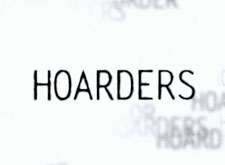This article has multiple issues. Please help improve it or discuss these issues on the talk page . (Learn how and when to remove these messages)
|
| Hoarders | |
|---|---|
 | |
| Genre | |
| Starring | Vincent Mcdonald |
| Country of origin | United States |
| Original language | English |
| No. of seasons | 16 |
| No. of episodes | 164 (list of episodes) |
| Production | |
| Executive producers |
|
| Camera setup | Multiple |
| Running time | 42–85 minutes |
| Production company | TLG Motion Pictures |
| Original release | |
| Network | |
| Release | August 17, 2009 – present |
Hoarders is an American documentary reality television series that debuted on A&E on August 17, 2009. The show depicts the real-life struggles and treatment of people who suffer from compulsive hoarding disorder. [1]
Contents
- Overview
- Concept
- Hoarding disorder
- Episodes
- Contributors
- Therapists
- Organizers
- Reception
- See also
- References
- External links
The series concluded its original run on February 4, 2013, after six seasons. [2] Over a year after the program's original cancellation in 2013, Lifetime began airing a series of weekly "Update" episodes on June 2, 2014. [3] Each "Update" episode presented an episode from earlier seasons, ending with a present-day visit to a featured hoarder by the therapist or organizer who worked with them. Interviews with the hoarder and their family reveal how their lives have progressed since their first appearance on the show. This led to the production of a seventh season, Hoarders: Family Secrets, which aired on Lifetime from May 28, 2015, to July 30, 2015. [4]
The program returned to A&E for subsequent seasons beginning with season eight on January 3, 2016. [5] "Update" episodes continue to run between seasons under the titles Hoarders: Where Are They Now?, Hoarders: Then & Now or Hoarders: Overload. The eleventh season premiered on July 20, 2020. [6] A twelfth season premiered on March 22, 2021. [7]